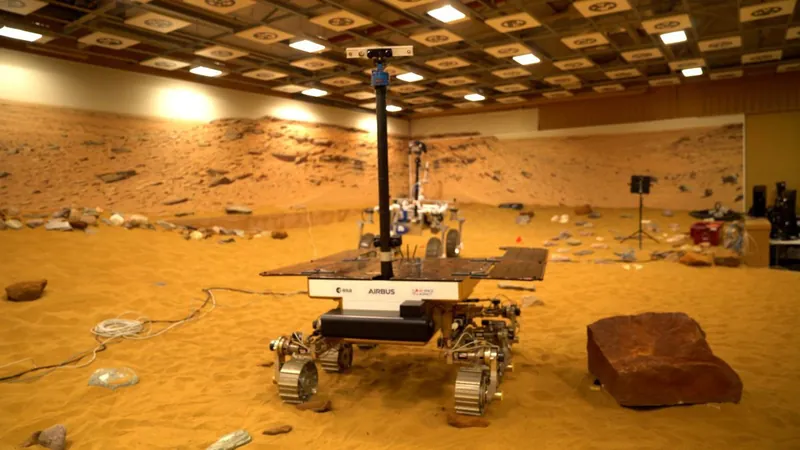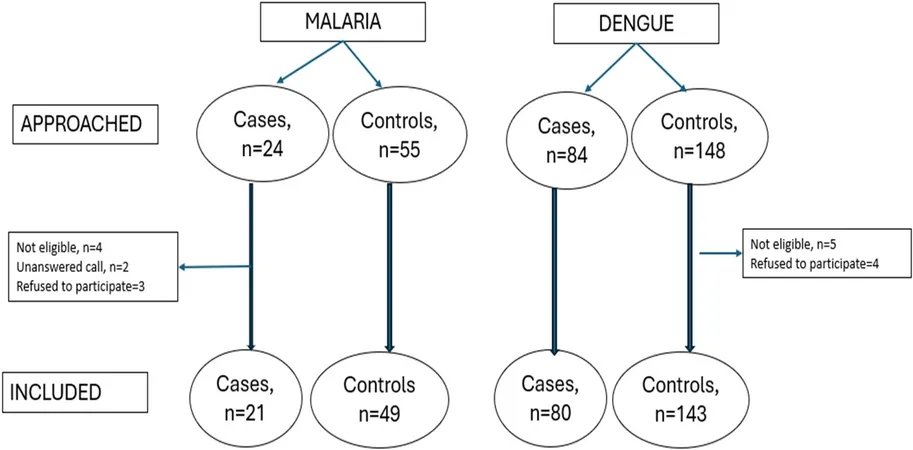
A Hidden Mars Mission: The Quest for Life Begins in Stevenage!
2025-06-01
Author: Nur
STEVENAGE, ENGLAND – Tucked away in a seemingly mundane factory in Stevenage lies a stunning replica of Mars. This unique laboratory, just a short train ride from London, is designed to simulate the planet's harsh conditions.
Constructed by aerospace giant Airbus, the lab features gritty orange sand, rocky terrain, and blinding lights that perfectly mimic Martian shadows. Here, scientists are gearing up to train the Mars rover, affectionately named Rosalind Franklin, which is set for launch on an extraordinary mission to explore for signs of life.
Opened in 2014, the Mars Yard has become crucial for testing the rover before its anticipated departure as part of the European Space Agency’s ExoMars mission in 2028. However, Rosalind Franklin won’t touch down on Martian soil until 2030.
Yvonne Pickering, a senior engineer at Airbus, explains the complexities of Mars exploration: "Launching to Mars is tricky due to the specific windows of opportunity that only open every 26 months," she reveals. "If you miss that launch window, Mars could be on the far side of the Sun, making it impossible to reach."
Once launched, the rover faces a nine-month journey through space, but a colossal dust storm on the Red Planet may delay its landing for an additional nine months, stranding it in a ‘parking orbit’ until it’s safe to descend.
Once the rover lands, its mission is to dig beneath the Martian surface to seek out organic materials. Recent discoveries have revealed massive underground water reservoirs on Mars—enough to fill oceans, making the hunt for life all the more tantalizing.
"The goal of our mission is to search for signs of life," Yvonne emphasizes. "Mars lacks the protective atmosphere and magnetic field that Earth has, exposing its surface to harsh radiation that can obliterate potential organic materials. We’ll need to drill down about two meters to find any remnants of life that might have existed."
The rover will not be searching for living organisms but rather evidence that life once thrived on the Red Planet. Communication is a challenge, with a time delay of up to 45 minutes between Earth and Mars, rendering direct human control impossible. Hence, the rover is equipped with autonomous capabilities to navigate the Martian landscape safely.
Effective navigation is paramount, as the rover can’t afford to take risks. Yvonne shares that if it were to topple over, it would spell disaster. "We have no means to right the rover if it falls," she notes, highlighting the mission's challenges.
In its slow-paced investigation, the rover moves at just 2 centimeters per second, methodically stopping to analyze its surroundings with high-resolution cameras before plotting a safe course.
So, does Yvonne believe life exists on Mars? "Mars displays many Earth-like features, including signs of ancient water flows, which could indicate that life once existed here too," she muses. The quest is on, and the excitement is palpable!



 Brasil (PT)
Brasil (PT)
 Canada (EN)
Canada (EN)
 Chile (ES)
Chile (ES)
 Česko (CS)
Česko (CS)
 대한민국 (KO)
대한민국 (KO)
 España (ES)
España (ES)
 France (FR)
France (FR)
 Hong Kong (EN)
Hong Kong (EN)
 Italia (IT)
Italia (IT)
 日本 (JA)
日本 (JA)
 Magyarország (HU)
Magyarország (HU)
 Norge (NO)
Norge (NO)
 Polska (PL)
Polska (PL)
 Schweiz (DE)
Schweiz (DE)
 Singapore (EN)
Singapore (EN)
 Sverige (SV)
Sverige (SV)
 Suomi (FI)
Suomi (FI)
 Türkiye (TR)
Türkiye (TR)
 الإمارات العربية المتحدة (AR)
الإمارات العربية المتحدة (AR)